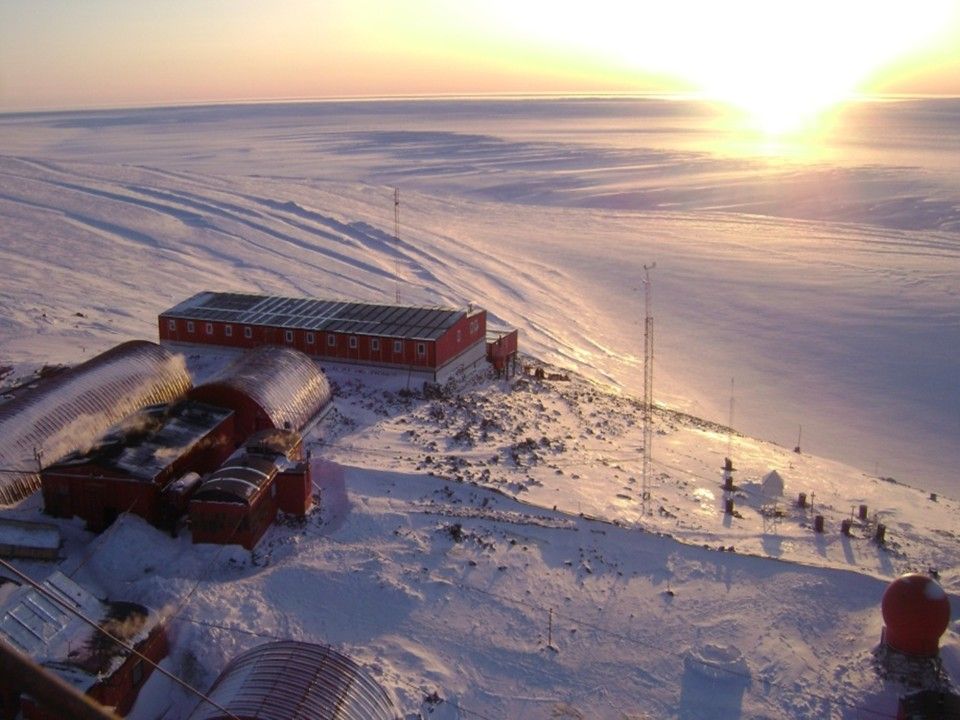RIO DE JANEIRO, BRAZIL – Two six-meter diameter parabolic antennas will be mounted on two-meter high metal structures at the Belgrano II Antarctic base, the southernmost of the Argentine sites on the continent, from where they will double the capacity of the National Commission of Space Activities (Conae) to operate Argentine earth observation satellites and access the data they produce.
The future Belgrano II ground station will be one of the closest tracking, telemetry and telecommand (TT&C) and satellite mission science data download facilities to the Earth’s poles, which, in addition to multiplying the access capacity to Argentine satellites, will also create new opportunities for cooperation with other space agencies.
Read also: Check out our coverage on Argentina
The Belgrano II Base is located in Nunatak Bertrab, in Vahsel Bay on the Confín coast in the Land of Cotas, about 1,300 kilometers from the South Pole and about 5,000 kilometers from the City of Buenos Aires.

The region is characterized by four months of polar night and four months of day, in which temperatures can reach tens of degrees below zero with winds of up to 200 kilometers per hour.
With only a meteorological window of a few weeks during the summer, Conae will have to coordinate with the Joint Antarctic Command (Cocoantar) of the Ministry of Defense and with the Secretariat of Malvinas, Antarctica, and South Atlantic (Semas) the logistic operations to complete the emplacement of both antennas in the Antarctic campaigns of summer 2023 and summer 2024.
Gustavo Rébola, Head of Conae’s Ground Station Unit, told Télam that “the closer we place the antennas to the South Pole, the more times per day we can observe our satellites. For example, Saocom 1A and 1B circle the planet 15 times a day, of which we can see them four times from the Ground Station in Córdoba; in Tierra del Fuego, on the other hand, we can see them seven times and, in Belgrano II, we can see them 15 times”.
“The more times we see the satellite per day, the more opportunities we have to control it and obtain the data it produces”, he pointed out.
Rébola said that “the antennas that will be taken to Belgrano II have the same technology to transmit in S-band and X-band as the antennas of the ground stations of Córdoba and Tierra del Fuego, but in this case, due to the particularity of the environment in which they will be installed, their engineering design was adapted to the logistic and operative possibilities available.”
He explained that “the icebreaker Almirante Irízar cannot reach Belgrano II directly due to the frozen sea conditions, so we had to think of antennas that can be transported in modules weighing no more than 2 tons that must be transported by helicopters from the ship to the base and that will be mounted on skids and wheels so that they can be moved on land.”
He added that “the big cranes that we would use in Córdoba or Tierra del Fuego to mount a 6-meter high antenna cannot be taken there either, so everything had to be conceived so that it can be mounted by a team of a few people by their means.”
“In addition, we are starting the bidding process for the construction of the 2 meter high metallic bases on which the antennas will be installed, which must also include a ramp to facilitate the ascent of the antenna components and which must also be able to be moved in components weighing no more than 2 tons,” he detailed.
The official indicated that “despite the hostile climate that prevails in Belgrano II, especially in winter, both antennas will be protected by the same radomes that are used to protect those of the Tierra del Fuego station.”
Both antennas have already been purchased and will arrive in Argentina next June.
“We will assemble and test them at the ground station in Cordoba, in an operation that we will carry out together with the crew that will operate at the Belgrano II Base during the winter of 2023 with the idea that they, who will be responsible for the assembly on-site, can incorporate all the necessary knowledge,” he added.
Rébola remarked that “we have no reference of any other ground station of these characteristics in Antarctica at a latitude so close to the South Pole, Norway has one a little further north and another one very close to the North Pole at a similar latitude to Belgrano II and which are part of Conae’s cooperation agreements.”
“Our station in Tierra del Fuego is in great demand due to its location, so we understand that the Belgrano II station will be beautiful for many space programs and will also multiply our international cooperation capabilities,” he concluded.

